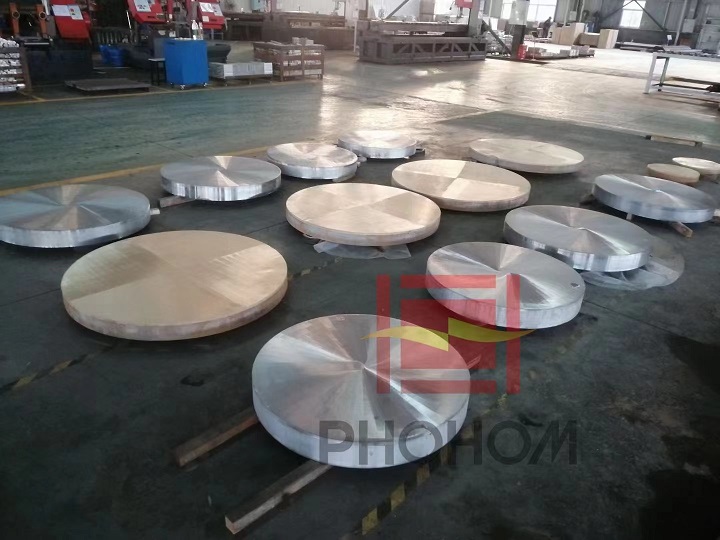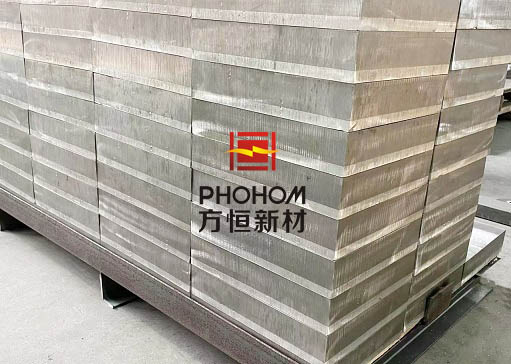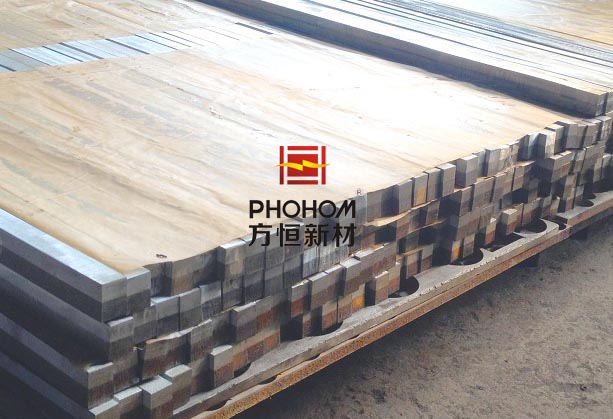Application of explosion cladding metals
The development and manufacturing of explosion composite materials is an important part of the scientific revolution of materials around the world today. It has broad market prospects and high economic benefits. At present, the combination of explosion welding materials commonly used in engineering is: copper-steel, aluminum-steel, copper-aluminum, titanium-steel, stainless steel-steel, nickel-steel, silver-copper, lead-steel, etc.
Cladding plates for pressure vessels
Cladding plates for pressure vessels are usually made of stainless steel, titanium, nickel, Monel, hastelloy alloy, etc. combined with carbon steel by explosive welding. This type of cladding plate has not only good weldability, formability, thermal conductivity and mechanical properties of carbon steel, but also excellent corrosion resistance of these clad plates to extend the service life of the vessels. Therefore, it is widely used in petrochemical, chemical, light industry, salt chemical, power station auxiliary aircraft, seawater desalination and other industries. For example: the vacuum tower, distillation tower, and heat exchanger of the petroleum refined plant; various reaction towers, sinking grooves, and mixers of the chemical factory; seawater desalination device of the seawater desalination plant; the dye cylinder, washing tower, autoclave in the papermaking industry; evaporator in the salt industry; compressor, dehydration device, pure water device, tube sheet of reactor heat exchanger, and various metal joints in the nuclear energy industry.

Electricity joints for metal smelting
In the electrolytic aluminum industry, a large amount of electrical energy is entered on the steel electrode in the electrolytic groove through the aluminum or copper guide line. Compared with traditional screw pressure connecting, the resistance at the bonding surface of aluminum-steel or aluminum-titanium-steel explosion cladding materials is almost zero, which can save power. At the same time, the aluminum-steel/aluminum-titanium-steel electricity joints can greatly improve the connection stability of steel claws and guide rods, improve the ultimate-use temperature, and reduce t he number of accidents of steel claw falling off in extreme conditions.

Structural joints for ship manufacturing
Aluminum alloy is usually used for ship construction to increase the speed of ships. However, considering the cost and durability, the main hull is usually made of steel, the aluminum alloy is only used for upper-level buildings to reduce weight and lower the center of gravity, thereby improving the performance of the hull. Steel and aluminum cannot directly welded due to their metal characteristics. The traditional method is to connect them by riveting, that is, welding a certain height steel cofferdam on the main deck, and then riven the upper and bottom edge and the cofferdam with bolts, rivets and rubber pads. This method is complicated, and the seal at the rivet is not strict and easy to leak, affecting the use performance of the the hull. The aluminum-aluminum-steel/aluminum-titanium-steel composite transition joints just solve this problem, that is,
connecting the two materials by welding the joints. This method not only is easy to operate, but also the joints are solid continuous, and the stress distribution is evenly distributed.
